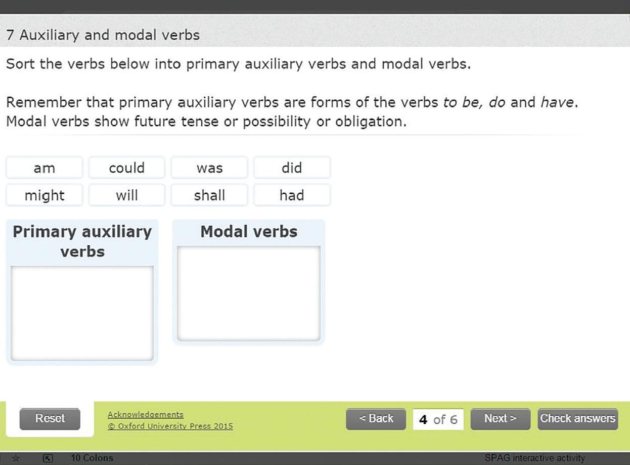Whole-school literacy has never been more important. The New National Curriculum states “Teachers should develop pupils’ reading and writing in all subjects to support the acquisition of knowledge”. This enshrines school inspector George Sampson’s well-worn dictum that “every teacher in English is a teacher of English”. He said that in 1921; how far we have come since then.
It’s obvious to say that no matter what you teach literacy is central to your subject and a bundle of skills can be supported, practised and boosted. The case for promoting literacy across the secondary curriculum is pressing and critical; you are probably thinking “What’s in it for me?” but the question should be “What can I do for my students?” The bottom line is quite simply that, as a teacher, you must include a literacy objective in all lessons and play your part.
Happily, this is where SSAT (The Schools’ Network) and Oxford University Press could come to your rescue as they have joined forces to develop an online resource powered by Kerboodle called Living Literacy, a comprehensive package devoted to whole school literacy policy, implementation and resources. It has been designed to help with various aspects of literacy from the leadership of the school and all the way down to the students themselves.
Complete package
There is a lot of bang for your buck with Living Literacy despite what might appear to be a hefty price-tag for a one-year subscription. £750 gets you some pedigree resources and if you are a member of SSAT then you can shave off £250 from that and smile. From a managerial point of view what you get is an all-embracing ten-section handbook to help you create and sustain a whole-school literacy policy. This includes sections on training staff and developing pedagogy and practice, monitoring and evaluation, and comes with easy to modify resources such as policy templates and teaching strategies. One of the most important parts of this literacy package is the INSET sessions available. There are five included, which cover an introduction to literacy, speaking and listening, reading, writing and gender. These include various thought-provoking handouts and pdfs with great classroom activities and flashcards ideal for getting into the literacy zone and mind-set required. I found the definitions of classroom talk particularly helpful, the gender gap statement cards irresistible for discussing with colleagues and the action research guide invaluable. There are PowerPoints, notes and handouts available.
There is of course plenty more. The ‘Read, Write, Speak’ section contains a range of short activities to support the development of students’ literacy skills; these are perfect for use as starter activities or in tutor time. There are 35 literacy worksheets on offer and they come from the brilliant Geoff Barton, the prolific writer and head teacher we all secretly want as our boss. Each comes with teaching notes so you are well supported. What I think are really useful are the extra student resources too, as these contain crosscurricular spelling lists one for each week of the academic year.
There is a Love Literacy section, containing 30 short, stimulating and practical classroom activities ideal for warm-ups and plenaries in all subjects. These are all tried and tested ideas – some of which you might know but plenty you won’t. They are creative, enjoyable and fast-paced and will undoubtedly help to improve students’ skills in speaking and listening, reading and writing.
Subject matter
There are subject-specific resources with a literacy focus, too, covering French, geography, history, maths and science as well as English. It would be good to see more subject coverage added over time. What is particularly good about these resources is the diversity, as they include film clips, web quests, progress tasks, interactive activities, editable worksheets and teachers’ notes. Some subjects have more activities than others but you can add adapt and add to these across your school. To further cross-curricular work there is a 20-unit resource for supporting different types of writing covering common text types with stacks of advice, tips, examples and support. There are also three specially commissioned CPD videos to watch in relation to a school in Derby and its whole school approach for reading intervention, promotion and support, which are ideal for promoting discussion.
Despite its broad scope, Living Literacy is very easy to use; all you have to do is click on the relevant tab to access what you need according to whether you are a student, teacher or senior manager. There’s a search box to make things even simpler.
A disjointed approach to whole-school literacy provision should be a thing of the past if you adopt this fantastic suite of inspiring resources. They will not only get everyone singing from the same hymn sheet but strengthen your students’ subject knowledge and that of your staff. Living Literacy rams home the message that literacy is a shared responsibility, and helps you take positive steps to put that value into action.
The Play’s the thing
The Royal Court is the leading force in world theatre for finding writers and nurturing new plays that are original, contemporary and provocative. It offers a range of education workshops to supplement your students’ understanding of its plays as well other aspects of the Royal Court’s Work, for example:
- Court Critique: a workshop exploring ways to review and evaluate live performance.
- Pre-show Workshops: an introduction to the themes and ideas explored in a particular play.
- Royal Court in a Day: a hands-on study day following the journey of a play from script to stage.
- The Performing Arts Business: an interactive workshop about the day-to-day running of one of the UK’s busiest theatres.







